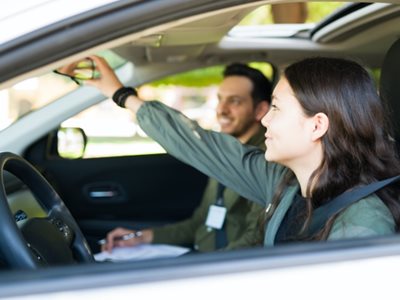Auto Insurance

If you want to drive in Ontario, you need auto insurance.
This isn’t just a matter of protecting yourself in the case of an accident or breakdown, it’s the law. However, it can be difficult to know what kinds of auto insurance are required, which are optional (and available), and the factors which go into balancing these for the best combination of cost and coverage.
Failure to carry the correct auto insurance can result in penalties, but ultimately the risk of not having insurance is precisely the risk that insurance is meant to cover. If you happen to be in an accident, or suffer some other car-related misfortune, auto insurance is there to cover the associated costs that you would otherwise not be able to pay.
What Kinds of Vehicles Does Haldimand Insurance Cover?

Different vehicles require different coverage. At Haldimand Insurance, we cover a wide range of vehicle-types, including:
Types of Auto Insurance
There are a number of different types of insurance required for motorists in Ontario. There are also some insurance types that are optional.
Required Auto Insurance
- Liability Coverage - Also known as third-party liability (TPL), this is the main type of coverage required in Ontario. If you’re at fault, whether in full or part, this coverage helps with the cost of injury, damage to property, and other fees. For example, you may be required to cover the cost of lost wages for anyone you injure, and liability coverage will do that on your behalf. This type of coverage can run from a few hundred thousand dollars to a few million.
- Direct Compensation - Also known as direct compensation-property coverage (DCPD), this covers damage to your own property (i.e.:your car) in the case of an accident that is not entirely your fault. In other words, if your vehicle is involved in a collision, and someone else is partially or entirely at fault, then this coverage will assist in having your vehicle fixed. It’s called “direct” coverage because it does not come from the person who is at fault, but rather directly from your own insurance provider.
- Uninsured Automobile Coverage - This type of coverage is intended to protect you in the event that the person at fault for a collision or injury is either unknown or uninsured. It covers both injury and loss or damage to property.
- Accident Benefit Coverage - This type of insurance provides general coverage for injury regardless of who is at fault. This coverage can help with things like rehabilitation costs, caregiver expenses, and income replacement. The extent of the coverage for this type of insurance is optional, even though having it is required.
Optional Auto Insurance
There are some additional types of coverage offered by many insurance providers.
- Specified Perils - This protects you from specific events like theft, attempted theft, weather events, and so on.
- Collision or Upset Coverage - These cover you in case of collisions or if your car rolls over when you are at fault in an accident. It covers damage to your vehicle caused by a traffic collision with another vehicle or object.
- Comprehensive Coverage - This covers other forms of damage done to your vehicle other than collision. For example, theft, vandalism, tree falling on your car, or any other flying or falling object.
- All Perils - Often referred to as “all risk” policy combines collision and comprehensive coverage, plus theft by somebody in the household or by an employee.
Some policies will also cover extras, like not having your rates go up if you’re in an auto accident, being provided with rental cars and towing services in the event that something happens to your car, and getting back the cost of your vehicle should it be lost.
The Cost of Auto Insurance
There are many factors which can influence the monthly cost of your insurance policy.
- Type of car - The make, model, and year of your car. Some cars are considered safer than others, and this will be reflected in your premiums.
- Your driving history - Your level of experience as a driver, as well as any relevant events (like past accidents and tickets) will be calculated into your risk profile, and translated into different premiums.
- Personal details - Your age and where you live will also likely affect your premiums. Younger drivers are considered to be a higher risk, so they typically pay more. Urban areas are considered to have more risks, accidents and thefts. Some areas have higher than average claims costs than others.
- Behaviour & planned use - What you plan on using your vehicle for will affect its associated risk. Depending on how often you drive and how many km you commute to work as well as if you are driving for commercial purposes can impact your insurance premium.
Changing the Cost of Your Policy
There are various steps you can take to get cheaper insurance or adjust the cost of your policy to get a lower price.
Given the factors listed above, you should inform your insurance broker whenever a significant change is made. For example, if you change the way you use your vehicle could be relevant to reducing your premiums. Also, you should look into the possibility of bundling more than one policy together to get a cheaper price.
There are some cases where you will want to expand your policy, potentially opting to pay more as a result. For example, you should assess how vulnerable you are in the case of a car-related accident or mishap. How will you be affected if you are unable to work? Can you take extended time off? Will you have assistance or someone to help with your care? Do you have dependents who rely on you? Answers to these questions might imply that you expand your coverage.
What to do in case of a vehicle collision or mishap
If you’re ever in an accident or vehicle-related mishap, it’s important to know what to do to make sure the insurance process goes as smoothly as possible.
Here are some steps you can take:
- Take photos and notes of the scene and involved vehicles
- Get names, details, and driver information of anyone involved
- Contact your insurance provider ASAP
- Ask for itemized receipts for anything received in relation to your collision
We Are Here To Help
Whichever type of auto insurance you need, contact us for a free,
no pressure quote. We work with you to recognize discounts and coverage possibilities to create the best protection plan available. We work hard to bring you the best insurance at the best value.